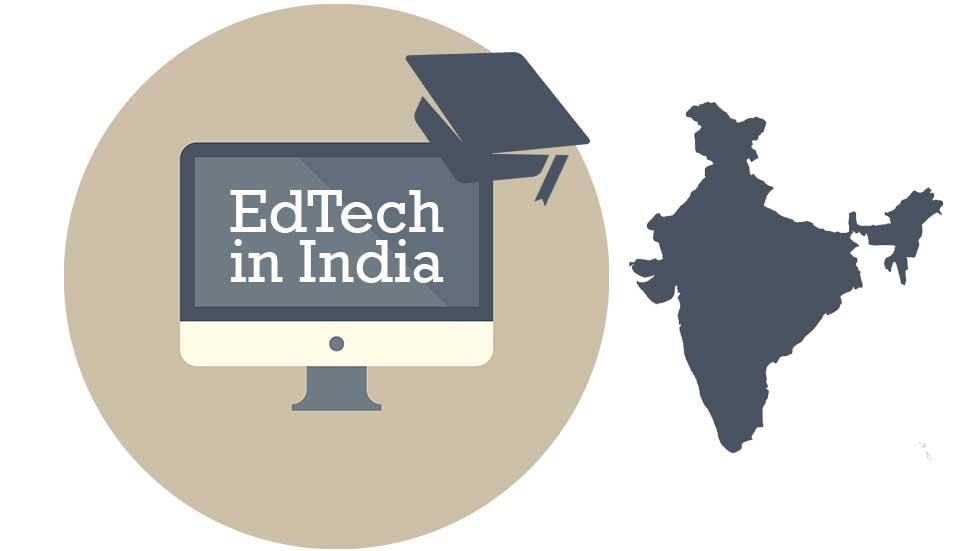Education is the promising sector to expand in India.
And we can say so by pondering in the stats and facts of the industry of the nation. Companies like BYJUS and Meritnation are examples why the budding entrepreneurs are inclined towards the edtech market. With a motive of being Digital India, education sector will see a revolution in the coming times and this is very much visible in the funding charts of the country. Looking at the bigger picture, it is estimated that The Indian EdTech market will touch over $70 billion by 2017, comprises the higher education sector (50%), K12 (40%), and coaching/tutoring taking up the remaining 10%.
The major edtech hubs Mumbai, Delhi, Hyderabad, Bangalore and Chennai are constantly coming out with edtech solutions that will cater to the country’s education needs reaching overseas for the same. Some of the emerging names are Toppr, TestBook, HashLearn, SimpliLearn, Embibe, Vedantu, Qriyo, UpGrad and more!
Capturing the growing influence of the internet on the education industry in India, Google and KPMG has released a joint report titled, ‘Online Education in India: 2021’. The report reveals that the online education industry will grow at a healthy rate of 8x, to become a 1.96 billion dollar industry by 2021. The report is based on a comprehensive market research conducted by KPMG, along with primary research and insights from Google Search. The report finds that the paid user base will grow 6X from 1.6 million users in 2016 to 9.6 million users in 2021.
The report revealed that over the last two years, there has been a 2x growth in online searches for education and a 3x growth in searches from a mobile device. Also, 44 percent of education searches are now coming from beyond the top 6 metros and there has been a 4x growth in education content consumption on YouTube in the last one year.
The edtech sector is currently one of the most exciting sectors in the Indian consumer market and some of the key factors that are driving the growth are availability of funds, support of the government, the need for the increasing number of institutions to upgrade and the smartphone user base.
Let’s explore more about these factors:
A general trend that we can see is the number of funding rounds is steadily going up. According to CB Insights, India led the international growth in terms of number of deals in edtech in the last 5 years followed by China and UK.
There are local players to support Indian edtech entrepreneurs to secure funding early on, namely seed funding and angel investment. This is one big reason for the increasing number of edtech startups in the country. Cherry on the top are players like EDUGUILD, which is India’s first EdTech accelerator that invests INR 1,500,000 ($22,300) in return for equity.
The EDUGILD accelerator is open to early stage edtech startups that have completed initial research and ideally have a working prototype or first customers of their product. EDUGILD offers a 16 week in residence mentorship program in Pune besides the seed investment. The accelerator program ends with a demo day where the startups pitch their products to selected investors. Other than this, we cannot skip the mention of the first successful edtech entrepreneurs that have turned into active investors.
The big move by the Government of India that had a significant impact on the edtech industry was “The Digital India Initiative”. The aim to transform India into a digitally empowered society and knowledge economy has brought a wave of revolution in every aspect. Integration of technology is being appreciated at all levels. Various government initiatives are being adopted to boost the growth of distance education market, besides focusing on new education techniques, such as E-learning and M-learning. One example of the same is eBasta, a web portal to get ebooks.
The education institutions across India are globalizing and are constantly trying to come up with the use of the best and latest technologies in order to provide the best education to students. To match up to the global level of education, institutions across India are influencing the demand of edtech innovation. In fact, some institutions are helping students to come up with such solutions that can help the education industry on a whole level.
In an article on Forbes, Joshua Kim the Director of Learning and Technology for the Master of Health Care Delivery Science program at Dartmouth College speaks on the reasons why India will lead EdTech in the 21st Century. He mentions how the vast user base of mobile use of the country is one big reason for the adoption of edtech in the coming times. “Just as India leapfrogged landlines and jumped directly to mobile phones, the country is set to leapfrog campus-placed based higher education and jump right to online learning. The first trend, mobile phone adoption, will catalyze the second (online learning). India has over 850 million mobile phone subscribers; with a rate of increase over 10 million a month these mobile devices will be the classrooms of tomorrow.”.. says Joshua.
Other factors that add to the growth of edtech in India are:
Largest Education Market: In terms of both students enrolled and the numbers of institutions established, the Indian education market is the largest in the world. It is made up of 1.1 million government schools, 320,000 private schools, 37,000 colleges almost 760+ universities, and thousands of private sector examination preparation and tutorial centers.
Highly decentralized education sector procurement: Vast numbers of highly independent institutions rather than centralized technology procurement at the national government level.
It seems that the EdTech industry is India is a blooming sector with a lot to offer to everyone that steps inside. It is certain that education technology will evolve setting the stage for the disruptive growth that we will witness in the coming years.
Share your insights in the comment section below.
